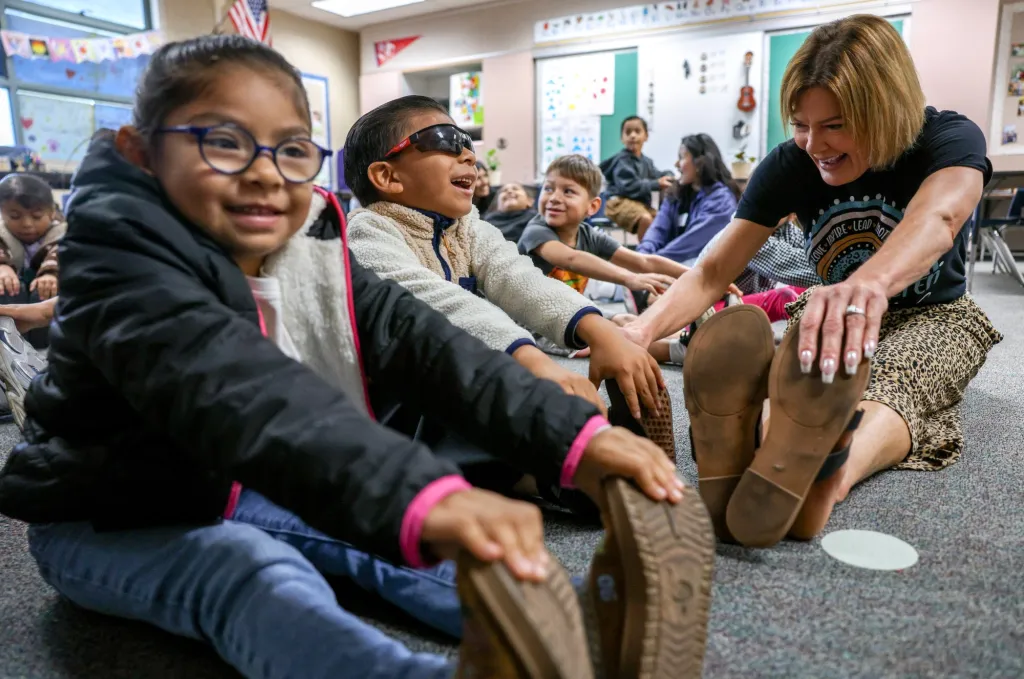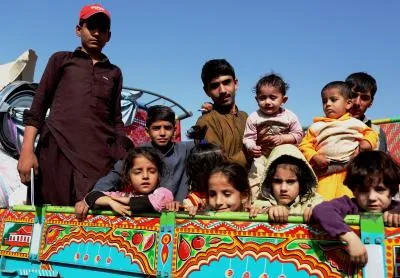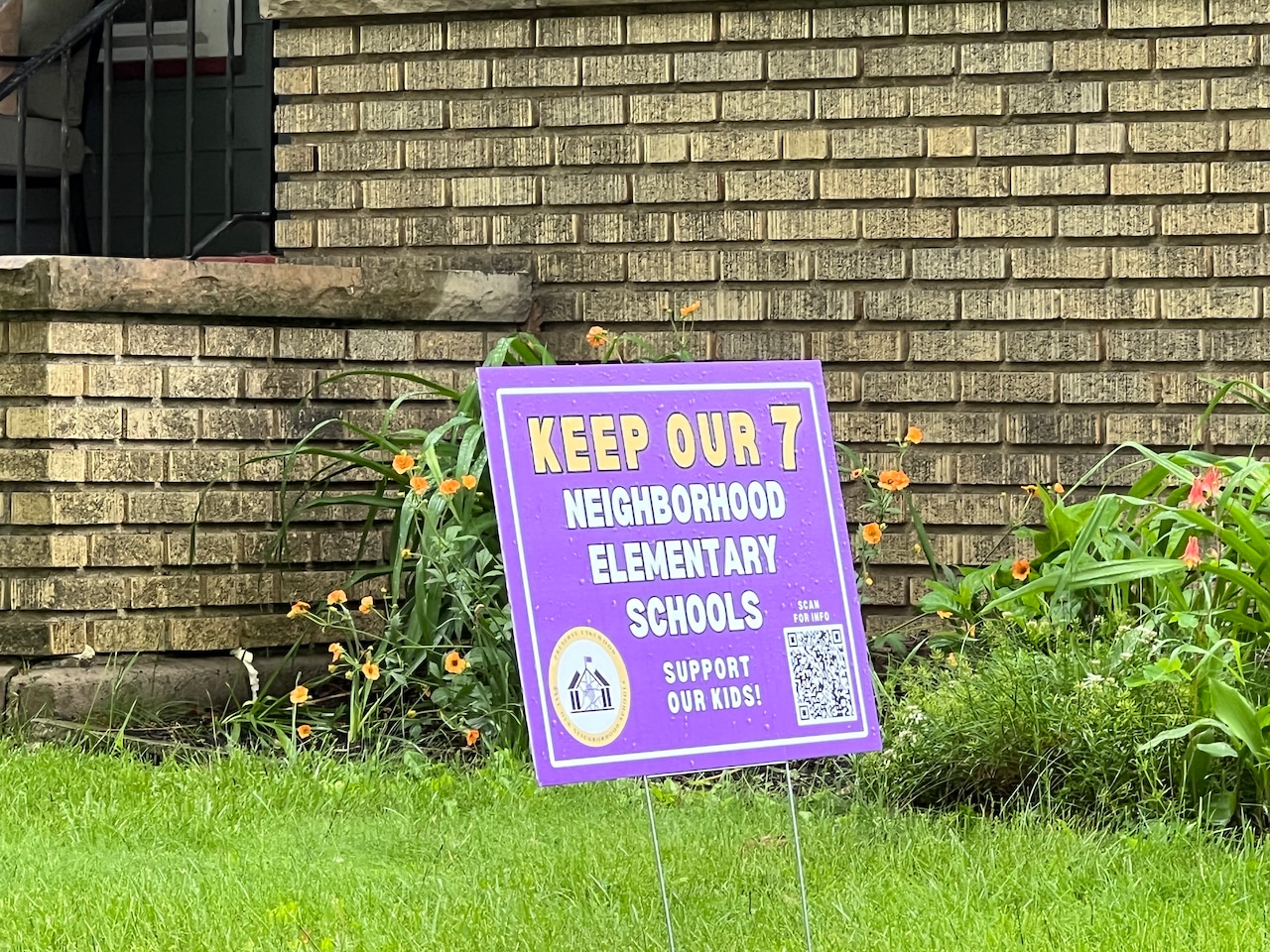Copyright San Diego Union-Tribune

In Corina Martinez’s kindergarten class, the students are always busy. One November day, they made crafts showing the growth of pumpkins. They did Disney-themed yoga. In response to a morning greeting, they shouted “hot dog” or “hamburger” — their choice. One had no answer and was seamlessly skipped. “You’re not hungry this morning,” Martinez said. Martinez, a teacher at Pioneer Elementary in Escondido Union School District, is one of just five teachers statewide honored as California Teachers of the Year. Another four were named finalists — among them Gregory Hinchliff, who teaches Native American studies, speech and debate at Bonsall High School Hinchliff and contributed to the state’s model Native American studies curriculum. With two of nine honors, it was a strong showing for San Diego County. And for Hinchliff, it’s a testament to the power of work that has been happening behind the scenes for a long time. He was also very happy to see Martinez honored. “San Diego County has the most Tribal reservations of any county in the whole United States, so (it) should really be a leader when it comes to culturally responsive education. I think that’s what this distinction kind of recognizes for me,” he said. Nearly one in 10 students at Bonsall High is Indigenous; the district stretches into the Pala Reservation. Martinez knows firsthand the powerful role a teacher can play in a student’s life. As a teen, she recalls being a smart girl who wasn’t making great choices. Feeling disconnected and unseen, she had started to disengage back in middle school. But in high school, a teacher reached out to her. Even when she first went to a community college before going to the college she said she would, he used to come into the restaurant where she worked. “He would kind of come in there and harass me, you know: ‘You’re still going to school, right? You’re still doing what we said?’” she recalled. “To me, that was so inspiring,” she added. “All kids need someone checking on them and pushing them and encouraging them.” These days, Martinez looks out for her own students — kindergarteners, after years teaching fifth grade. “Now that I’m here as an educator, I feel like it’s my job to be that person for all of my littles, for all of my people,” she said. For her, that includes fighting chronic absenteeism, which she points out can mean missing as little as two school days per month. At the elementary school level, she says one way to do that is to get her students to want to come to school — and to miss their classmates when they’re gone. She has her class color a letter when every student is there, and she makes a big deal when one of “our friends” is missing. Throughout the day, she’ll say how much they miss that classmate, and how sad it is that they’re missing out on an activity. Another child might think twice about wanting to stay home. “I think that conversation that happens at home sometimes — is it the parent that wants the child to stay, or is it the child that wants to stay and convinces the parent to let them stay?” she said. “I want to work on it from the angle of my students. I want them to want to come to school.” One morning, Martinez’s students started the day playing with Legos for a few minutes, building creations that included robots and houses. She had one student explain how he made his. Next Martinez gathered her class for language sounds and yoga. Then they moved to a science lesson where they colored pumpkin seeds, sprouts, flowers and pumpkins, then pasted them into an orange foldable in the correct order. If they had time at the end, they could draw their own pumpkin patch on the back. (One girl chose to draw a San Diego Union-Tribune reporter on the back of hers.) For Isaac, 6, his favorite part of the school day is doing work. For Dailyn, 5, it’s reading. Maria Jolls, a behavior interventionist with the district, said Martinez has a number of students with higher emotional and developmental needs. She’ll “take the time to help them, encourage them to come back to the group, instead of just letting them be,” Jolls said. Her two student teachers have learned from Martinez, too. Michelle Edgeworth credited her with teaching her classroom management, as well as collaboration to figure out what a student and a community need. “I have learned so much about teamwork and collaboration,” she said. And Joann Punzalan appreciated how Martinez had told her the student teaching experience could be whatever she wants it to be. You can be a student in the corner, observing. “Or you can be the student teacher that is trying and failing. But you’re learning, you’re growing, you’re asking me all these questions,” she said. “That really, really resonated with me.” Like Martinez, Hinchliff also includes play in his day, but at a more advanced level. In his Native American studies class, Hinchliff has almost two hours of class time. One November day, that period was broken up into parts including reading and review, as well as two games that got the students away from their tables. One game taught about hunting skills, and the importance of relying on all senses other than sight, by having a blindfolded player wielding a block of foam ward off others trying one by one to steal three rulers from them. At the end of the class, students had to write a short story inspired by what they were learning about social order, daily life and archetypes — such as powerful heroes or tricksters — and by another game they had played, with each student a fox or a rabbit. Hinchliff wants his students to see themselves in the class. He has Native figures on one of his walls, and he has maps and graphics around. “These are all things that students may not be finding in their other courses throughout their schooling — but it’s something that can really serve to inspire them and help them see themselves in their classroom,” he said. That was the case for Evan Pepper, now a 17-year-old senior, who took the class last year and was particularly fond of its storytelling unit. As his student, Evan visited Sacramento with Hinchliff to present the Native Studies curriculum to the State Board of Education. As a representative of Native youth, he wanted state policymakers to know they were still there. “We are the people who are still taking care of the land,” said Evan, who has Tribal affiliations of Cupeño, Luiseño and Pomo Northern Kashia. “This is something we don’t talk about as much in the general population. “Like here, like normal school, I don’t really hear much at all about us — besides teachers going off curriculum and teaching, ‘Hey, by the way, here’s a real snippet of history you need to know for context,’” he added. Evan appreciated Hinchliff’s interest in learning history and could always tell he cared about his students. “I can tell he genuinely cares when I talk about certain things,” he said. Hinchliff said that making sure all students from different backgrounds feel supported comes from getting to know them and understand what interests them. “That’s something I try to establish really early in the school year, through different activities,” he said. “Once we kind of have that understanding and kind of a good idea of what their goals are, that allows you to craft your lessons around that.” For him, teaching is about empowering his students. “It means making sure that students, whatever their background, have the opportunity and the agency to make the change they see needed in their community,” he said.



